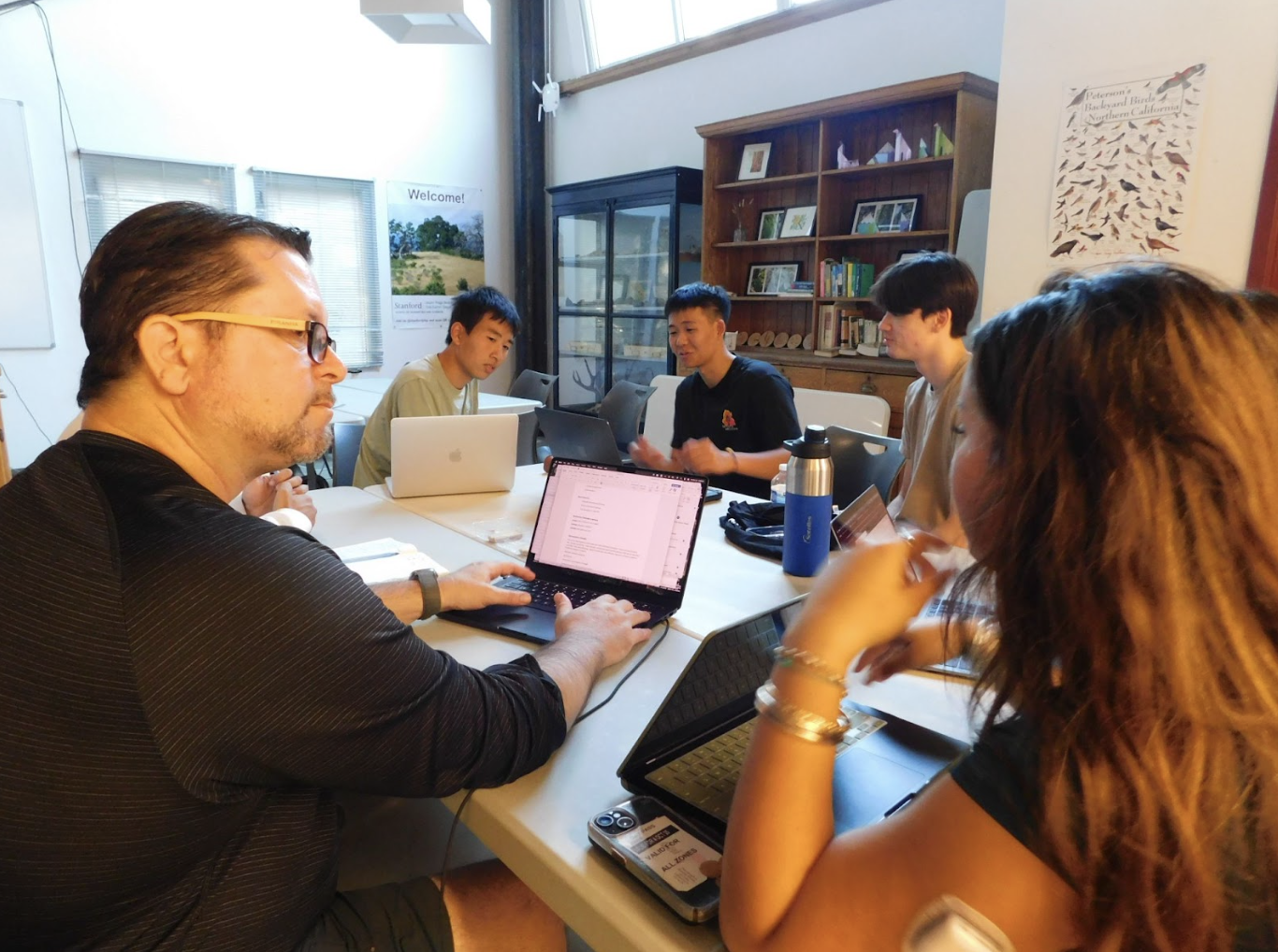‘AI Into the Wild at Jasper Ridge’ brought students, Distinguished Career Institute (DCI) Fellows and Stanford affiliates to Jasper Ridge the afternoon of Friday, Oct. 24 to learn more about the preserve, wildlife monitoring technology and the wildlife conservation applications of AI.
Jasper Ridge Biological Preserve sits about five miles off campus. Its nearly 1,200 acres of land serve as a refuge for native plants and animals, a natural laboratory for researchers and a site for docent-led tours.
“In addition to a wonderful natural setting, Jasper Ridge supports staff, facilities, classes, internships, equipment and data sets that are often integral to the success of student projects here,” Trevor Hébert, Jasper Ridge’s academic technology specialist, wrote to The Daily.
Alice Heiman ’27, one of the event organizers, aimed to bring Stanford affiliates to the preserve while showing the positive ways AI can be utilized for the environment.
“We’re saying, ‘Can we use this technology to help us try and understand the real world better?’” Heiman said.
According to Katie Glover, Jasper Ridge’s associate director of environmental education, although math and computer science students often visit the preserve as part of class visits or STEM programs, many students never learn how technology can be applied to monitoring and understanding the natural world.
On Friday, participants chose between guided hikes led by Glover or Hébert. Glover’s tour emphasized the biotic diversity of the preserve, while Hébert focused on the Jasper Ridge Global Change Experiment, highlighting wildlife cameras and monitoring technologies.
Following the hike, participants collaborated in small groups to brainstorm applications of AI in wildlife and biodiversity conservation. The brainstorming session was led by Andrés Adolfo Hernández Celis, a graduate student at Universidad de los Andes in Bogotá, Colombia and an applied research scientist at the Microsoft AI for Good Lab.
Celis shared some of the work from Microsoft’s AI for Good Lab, which uses AI to identify and track animal species recorded by wildlife cameras and satellite imagery.
‘AI into the Wild’ and Stanford Climate Week as a whole displayed Stanford students and community members’ varied passions in the environmental sphere, whether for animal monitoring or other sustainability initiatives — just “one awesome thing” about the Stanford community, event organizer Aadesh Salecha M.S. ’26 said.
“This event is a cool forum for all of us to come together, hike through this and see what we are trying to protect and apply our skills,” said Salecha.

